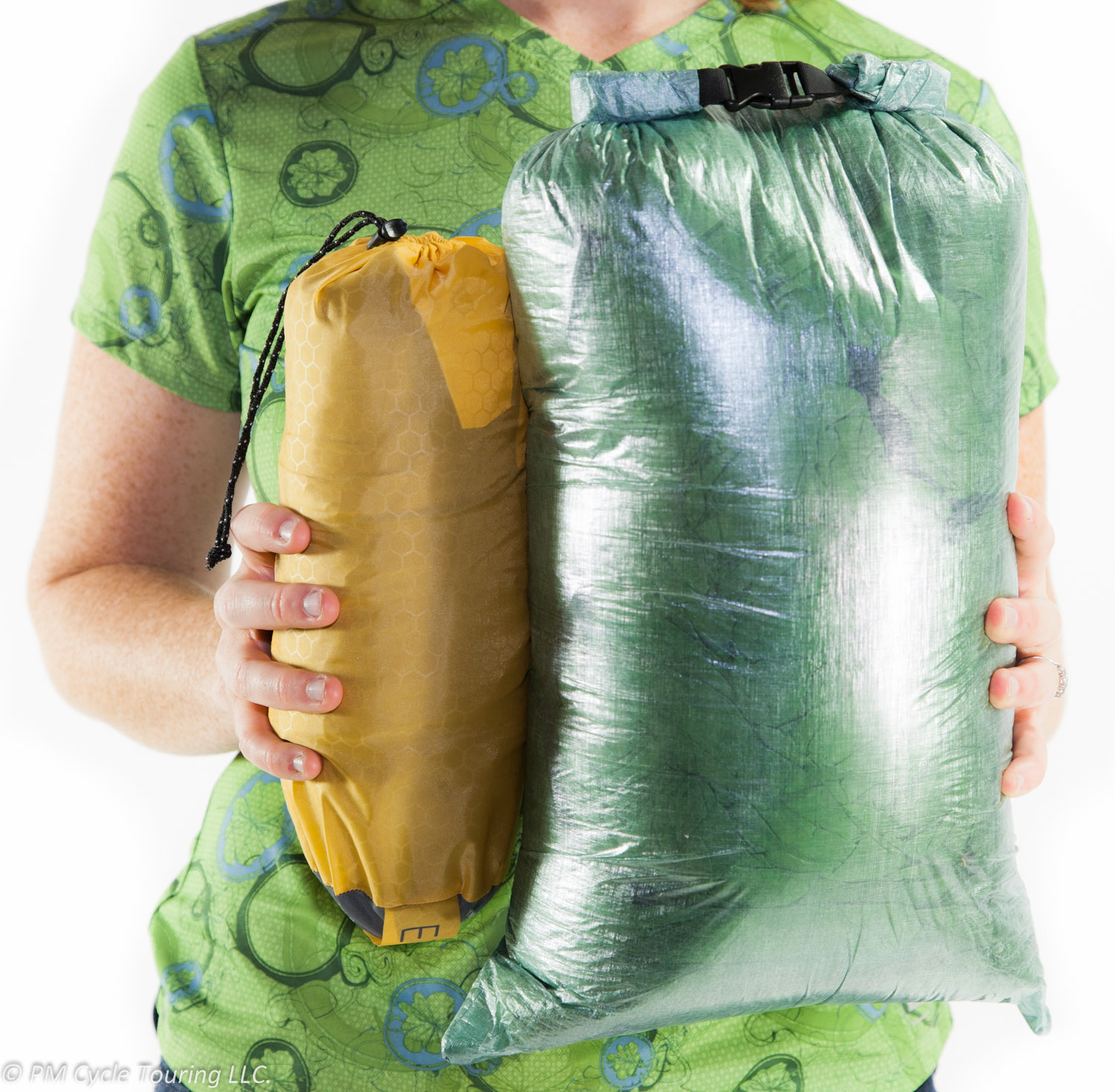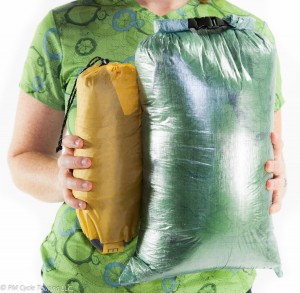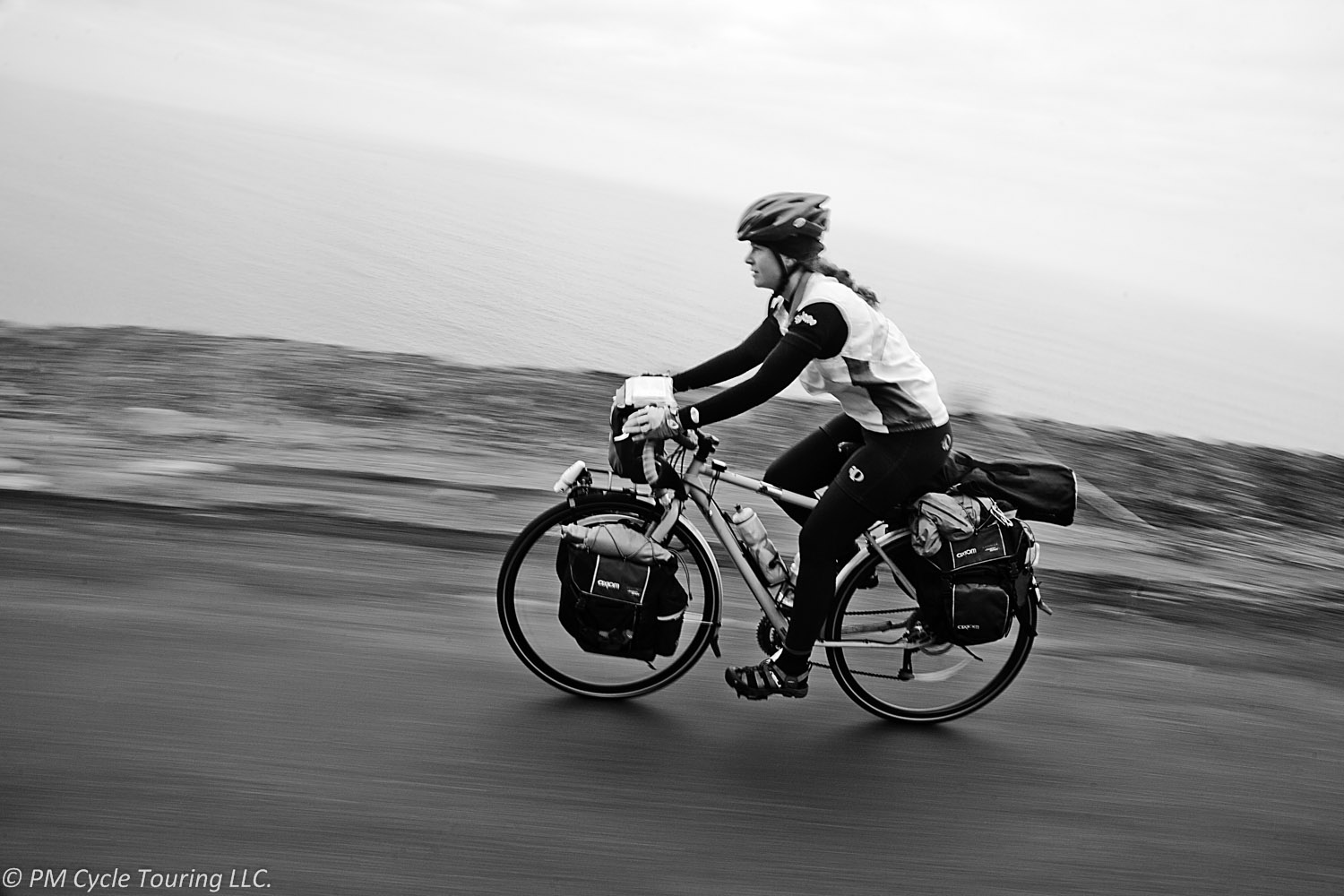Your sleeping pad can make or break your camping experience. When touring the primary concerns for a sleeping pad are comfort, weight, durability, size, and ease of use. The Exped Synmat UL 7 exceeds expectations in all of those categories.

Comfort is the whole reason for bringing a sleeping pad, and can be difficult to quantify. Pads typically can be broken down in to two categories: Solid foam or Air Inflated. The Exped is air inflated and has a maximum inflated depth of 2.8 inches; the amount of air in the mattress can adjust pad firmness. The Exped also has insulation inside the pad to keep you warm on cool nights. Not much is worse than sleeping on a cold pocket of air. There is some concern that this insulation may work to keep you warmer on hot nights, however neither Pam nor I noticed that the pad was uncomfortable even in the hot humid nights in the South Eastern United States.
Weight is where the Exped shines, at only around 400 grams (depending on the size of pad you choose) it is one of the lightest pads available. Lighter weight pads tend to be made of crinkly plastic; this pad is constructed of a material that feels like very tightly woven nylon. It does not stick to the skin and can be laid on directly with reasonable comfort. Noise-wise this pad does create a bit of sound when laid on and if you toss or turn during the night, however we have yet to find a magical silent pad and you quickly get used to this sound.
Durability of any inflatable pad is directly proportional to how you treat the pad. If you throw it on the ground and aren’t careful about where you put it (like Matt) it will probably get a hole or two (read here about how to patch holes). However if you are careful and make sure you only place the pad on surfaces free of debris (like Pam) then you can go an entire tour with no problems. We did not find any appreciable difference in the durability of these pads compared to other pads we have used.
The size of the pad you choose can be very personal and also depend on weight. If at all possible try out the pad in the store, make sure you can inflate it to a firmness you like, and lay on it to verify comfort. Matt and Pam both prefer pads that go from head to toe. Matt is 6’1” and chose to go with the M size (72 in long) and Pam is 5’6”, so she went with the S size (64 in long). An option for those looking to go ultralight is to get the smallest pad possible, just covering the shoulder, torso, and hip area, letting the legs hang off the edge. This reduces overall pack weight, but might also reduce comfort.

The pad has two valves similar to all other Exped products, one for inflation which has a flap to prevent air leaking out between breaths until you close the cap, and the other to allow for deflation. Both of these have a hole approximately the size of a quarter to allow for rapid inflation and deflation. Compared to twist valves used by other companies these valves operate much easier.
To inflate the pad we use our Schnozzle Bag which takes about 4 full bags to completely fill it. If you elect to fill it manually it takes quite some time. In fact we have never even tried; just get yourself the Schnozzle bag! Inflation pressure can be tweaked by keeping the inflate valve cover open and pressing on the flap to release small amounts of air. Deflation is quick due to the large opening deflation cap, it takes about 30 seconds to deflate to where you are touching the ground and no more air is exiting.

Overall we have been very pleased with the Exped Synmat UL 7 and highly recommend them. In our opinion these pads are the best all-around pads available. They are a good compromise between weight and comfort. We used them on our Southern Tier Tour and our New Zealand Tour and they continue to be our go to choice. When combined with the Schnozzle Bag we find it difficult to imagine we will be looking for other pads in the future.
Detailed Specs:
| Name | Exped Synmat UL 7 S / UL 7 M |
| Weight | 399 g / 463 g |
| Packed Dimensions* L x Diameter (cm) | 24 x 9.5 / 24 x 10.5 |
| Inflated Dimensions L x W x Thickness (cm) | 162.5 x 53 x 7 / 183 x 53 x 7 |
| Temperature | 25 F (-3.8 C) |
*Dimensions will vary based on how tightly you roll the pad. This is just an example of what you could expect when you pack the pad.
Disclaimer: All opinions about any products mentioned in this article are my own. I have not received any compensation for this review. This review is for informational purposes only.











